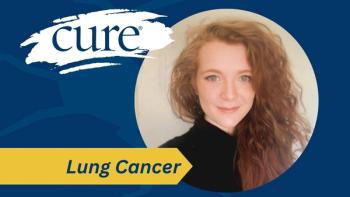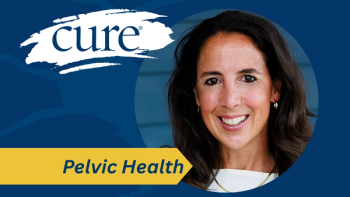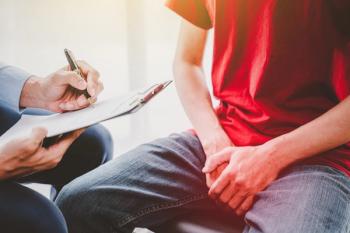
- Spring 2016
- Volume 15
- Issue 2
Paying it Forward: Trials Can Improve Life for Future Cancer Survivors
By participating in survivorship clinical trials, those who have weathered cancer can improve quality of life — not just for themselves, but for future survivors.
Professional singer Nicholle “Nikki Jean” Leary of Los Angeles had just finished a nationwide tour with Kanye West, Rihanna, N.E.R.D. and Lupe Fiasco in 2008 when she discovered a lump in her throat.
“The last thing I needed was trouble with my vocal cords,” she says. Her doctor found an enlarged thyroid and a number of nodules, but since none of them appeared malignant, Leary wasn’t treated.
Four years later, though, she developed symptoms — hoarseness, difficulty swallowing and reflux that impacted her voice and could possibly have derailed her career. Not only had Leary’s thyroid gland become even more enlarged, but the nodules now numbered 40.
In 5 percent of cases, these kinds of nodules are found to be thyroid cancer. Luckily, that wasn’t the case for Leary. But whether a patient is facing thyroid cancer or strictly symptoms that are interfering with daily life, the initial treatment tends to be the same — thyroidectomy. Leary knew that was a possibility, and she knew she needed an expert.
In an online search, she found Ralph P. Tufano, director of head and neck endocrine surgery and director of the Johns Hopkins Multidisciplinary Thyroid Tumor Center, who seemed especially concerned about preserving the voice when treating thyroid problems. “I immediately made an appointment,” Leary says.
During her research, Leary had learned that small nerves around the thyroid and vocal cords control voice pitch, but one in particular, the external branch of the superior laryngeal nerve, controls voice quality. “When I asked Dr. Tufano if there was some way to protect that nerve, his face lit up,” she says. “He told me he was pioneering a new surgical sensor specifically designed to save that ‘neglected nerve.’”
That was enough to convince Leary that Tufano should perform her thyroidectomy.
Prior to surgery, Tufano asked Leary if she would participate in a survivor clinical trial run by speech-language pathologist Heather Starmer to determine the success of the new technique, which involves the use of a laryngeal nerve-monitoring endotracheal tube. The trial consisted of completing voice-related quality-of-life forms, allowing detailed imaging of the vocal cords in action through a technique called videostroboscopy, and recording her voice before and after surgery. Leary readily agreed.
The post-surgical testing by Starmer showed favorable results and, sure enough, after a few months, Leary’s voice improved. Today, it’s stronger and better than prior to surgery, and she recently appeared with Lupe Fiasco on “The Tonight Show.” She attributes it all to her doctor. “Dr. Tufano saved my career,” says Leary, who refers to the doctor as her hero. “I hope other patients will benefit from the outcome of my surgery and clinical trial.”
SURVIVOR TRIALS
Ten to fifteen years ago, there was not a large enough body of cancer survivors to consider anything beyond saving lives. “Today, there are 14 million survivors and counting,” says Starmer, assistant professor and director of the Head and Neck Cancer Speech and Swallowing Rehabilitation Center at Stanford University School of Medicine. “We’re conducting survivor clinical trials to help patients deal with the mental and physical aftermath of surgery, chemotherapy and radiation.”
There is a difference between survivor trials and clinical trials that involve the testing of new medications. The former are designed to find ways to treat the symptoms that linger after cancer and its treatment, the latter to treat the disease itself. However, both follow a protocol, which is often a randomized trial, with a control group that uses standard methods versus a group that participates in the strategy being evaluated — in the case of survivor trials, often exercises, psychological counseling or medical strategies to alleviate the long-term side effects of treatment.
Alternatively, sometimes medical therapies may be involved that can address physical or psychological symptoms. “Many patients are open to considering trials involving quality-of-life and survivorship, particularly as cure rates improve,” Starmer says.
The trials have yielded important results. In one study cited by Starmer, patients who started preventive exercises before treatment for head and neck cancers had less difficulty in swallowing after radiation therapy. Those who didn’t start an exercise program until after radiation had poorer results. “It changed our entire approach, and we now recommend exercises from the onset for every head and neck patient,” Starmer says.
In survivors of all kinds of cancers, one of the biggest fears is of recurrence, and this can cause distress. In one 2011 study of women successfully treated for breast cancer with surgery, 14 percent reported depression and symptoms of post-traumatic stress disorder (PTSD) 15 months after treatment — a condition often associated with war or major trauma, but also increasingly recognized in cancer patients. Cognitive problems related to cancer treatments, often referred to as “chemo brain,” as well as neuropathy (numbness and tingling in the extremities), lymphedema (swelling in the limbs), hot flashes, premature menopause, insomnia and fatigue can also dog patients.
“Through a randomized clinical trial last year on chemo brain using a cognitive rehabilitation intervention, we’ve found that breast cancer patients who attended the two-hour-per-week, five-week program led by a neuropsychologist and did memory and attention exercises at home saw significant improvement compared to patients in the waitlist control group who were not given the instructions,” says breast oncologist Patricia Ganz, director of the Center for Cancer Prevention and Control Research at the Jonsson Comprehensive Cancer Center at UCLA. “When all the assessments were done, survivors in the control group were also offered the intervention program. With this level of evidence, we can now refer patients for clinical interventions such as this that help them recover their cognitive function after treatment.”
Other clinical trials conducted at UCLA found that severely fatigued breast cancer survivors who participated in yoga classes twice a week for 12 weeks had significant improvement in that symptom compared to women receiving health education as a comparison. In another study, Tai Chi Chih was effective for management of insomnia in breast cancer survivors, even when begun several years after their initial treatment. Many other trials to improve symptom outcomes with physical therapy and integrative medicine approaches are being conducted in centers around the world.
At Memorial Sloan Kettering Cancer Center in New York, one trial is looking at different methods of assessing heart damage in women treated with Herceptin (trastuzumab) for breast cancer in hopes of identifying and managing patients to avoid long-term problems. Another is studying whether a device that emits electrical stimulation, implanted in the lower back, can help patients control their bowel movements following surgery for rectal cancer. Yet another is considering whether a non-estrogenic moisturizer can relieve vaginal dryness in survivors of postmenopausal, hormone receptor-positive breast cancer.
Participating is something patients can do for themselves — and for others who will someday walk the same path. “There is always some altruism involved in clinical research studies,” Ganz says.
FINDING CLINICAL TRIALS
The optimal time for patients to get involved is early on. The sooner the buy-in, the better the outcome, but according to Ganz, no matter where patients are in their cancer journeys, there are research opportunities available. Even for eager participants, trials are not always easy to find. Physicians and clinicians get caught up in cancer treatments and sometimes fail to let patients know about the availability of these programs. Therefore, for survivors who are interested, it’s essential to be proactive. Talk to oncologists about survivorship and quality-of-life goals, and ask about survivor trials immediately after diagnosis. If looking that far ahead doesn’t seem achievable in the face of a diagnosis and treatment decisions, patients can try again later, asking their oncologists to include survivor clinical trials in their survivorship plans.
If you can't find trials in your area, seek out advocacy groups for particular types of cancer and ask them for information, and look for online support groups of patients, who can often provide referrals and tips. You can find America’s largest listing of federally funded trials at the National Institutes of Health website (clinicaltrials.gov), with a patient-friendly
Major cancer centers may list their survivorship trials on their own websites. In addition, a private site, trialdetails.com, brings up more than 21,000 studies when a user types in the search term “survivorship.” On either site, a search such as “breast cancer survivorship” or “chemobrain” can help users hone in on what they are looking for. More help in finding survivor clinical trials can be found at cancertrialshelp.org.
With prior approval, insurance generally covers the cost, but most trials are free, and some even pay participants.
A NEW MODEL FOR POST-CANCER CARE
In the early battle against cancer, when treatments were less advanced and brought poorer outcomes, the primary concern was crisis intervention, strictly to treat the disease. There was little or no help navigating the journey after remission. Yet, many cancer patients and survivors — nearly one in four women newly diagnosed with breast cancer, and one-third of survivors of non-Hodgkin lymphoma, according to two specific studies — suffer from PTSD.
To assess whether it was best serving survivors, Northside Hospital Cancer Institute in Atlanta used a Psychosocial Matrix Assessment tool developed by the National Cancer Institute Community Cancer Centers Program. The tool can help a facility determine whether it is prepared to create and carry out a psychosocial plan of care for each of its cancer survivors.
Based on the results, clinical expertise and the research of Ruth McCorkle, a professor at the Yale University School of Nursing, the American Psychosocial Oncology Society (APOS) funded a two-year scholarship for Nikeisha Whatley, manager of behavioral health services and the Psych—Oncology Program at Northside, to create a comprehensive distress screening program. It covers the cost of the development of the program over two years by Northside, Yale University School of Nursing and APOS. They’ll work together on a new model that combines state-of-the-art conventional medical treatments with carefully selected adjunct therapies like psychological and psychiatric care that have been shown to be effective and safe through the years.
These complementary approaches include disciplines such as nutrition, yoga and meditation, and are aimed at helping to achieve optimal health and healing in cancer survivors. Although Northside already offers a variety of support services and therapies, the collaborators have just begun the second year of the trial. Their goal is to unite the methods that achieve the best outcomes and develop a model that can be replicated by other institutions.
“Our old model involved a social worker who dealt with practical issues like transportation needs and finding financial resources, but we didn’t have a formal way of assessing and delivering emotional care from a psychological model standpoint, Whatley says. “Cancer doesn’t discriminate, so if there are any untreated emotional issues, the cancer diagnosis is only going to make those issues potentially worse.”
The new model uses an integrative medicine approach similar to the kind of therapeutic plan that can be used to treat PTSD. "It helps patients not only survive their cancer, but the aftermath,” Whatley says. As a result of the program’s success, Northside now screens all oncology patients for distress.
“What makes it work so well is the combination of services,” Whatley continues. “Following our first year of the study (2014 to 2015), we saw an increase of 256 percent in oncology social work alone. Whatley and a colleague presented the outcomes at a workshop at the World Congress Psycho-Oncology Conference in August. More recently, Whatley’s Abstract No. 331, titled “Implementation of an Integrated Distress Screening Program,” was accepted for poster presentation at the 2016 APOS Annual Conference, which occurred in March.
FACING DEMONS
Sometimes, the most difficult part of participating in a survivorship clinical trial is returning to hospital grounds, which can trigger the same kinds of PTSD experienced by trauma victims and servicemen and women returning from war. In fact, like soldiers, many survivors experience not only PTSD but depression after the “war” has ended.
It comes not only from the fear of dying, but of suffering or becoming a burden to loved ones. “Too many have chosen the suicide route over fear of what the future holds. In fact, the suicide risk of patients doubles after diagnosis,” Whatley says.
“One patient with a poor prognosis came into treatment talking about ways of killing himself if the cancer recurred. Today, what he fears most is that the depression will return,” says Whatley. “He’s outlived the five-year prognosis, which demonstrates that, if we can treat the emotional piece, a patient’s longevity is often greater.”
PTSD and depression can make it difficult to enroll survivors in clinical trials, simply because patients are reluctant to return to the place where they underwent treatment for cancer.
To alleviate the PTSD that comes just from being on the hospital grounds, Northside treats survivors at a behavioral health center removed from the complex. Combining talk therapy with medications gives these survivors true access to emotional treatment. “We hope the next step will be bringing a telemental health model to rural areas,” which would involve offering counseling via phone or computer to survivors who don’t live close to any such services, Whatley says.
“We’re definitely trying to stay ahead of the curve with the most modern ways of treatment, which increases access to care.”
As survivor studies like Whatley’s move along, the Commission on Cancer is doing work that could dovetail with those efforts. It has been working to establish a psychological distress standard and put a process in place for survivors of cancer so that they have access to mental health professionals.
Whatley hopes other leading organizations will get involved, as well.
“We hope that the American Psychiatric Association will look at PTSD after cancer as a diagnosis in itself,” says Whatley. “That will bring added resources and more acceptance to our integrated model. The fear of recurrence is very real in survivors. We know that some patients do what they have to do to get through treatment. Life after treatment is where emotions really surface.”
Articles in this issue
over 9 years ago
Med-Time Stories: Picture Books for Children With Cancerover 9 years ago
Matching Cancer Treatment and Support to the Individual's Needsover 9 years ago
Comments From Readers on CURE's Spring 2016 Issueover 9 years ago
Attention Smokers: Watercress Extract May Detoxify Carcinogensover 9 years ago
In Film, Young Man Sheds Light on Childhood Cancerover 9 years ago
Are Patients Reaping the Benefits of Cancer Advancements?over 9 years ago
Getting Graphic About Cancerover 9 years ago
Role Reversal: When Husbands Become Cancer Caregivers



